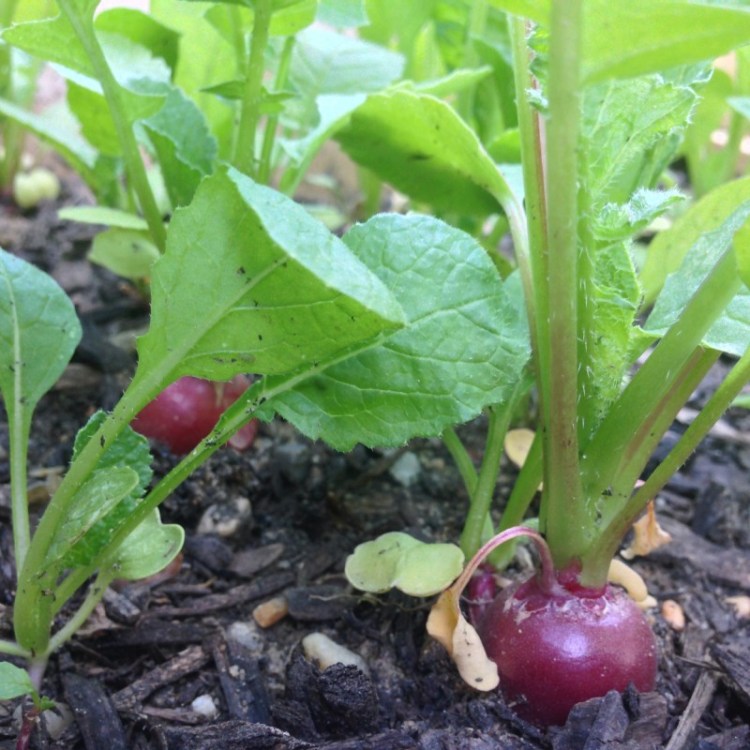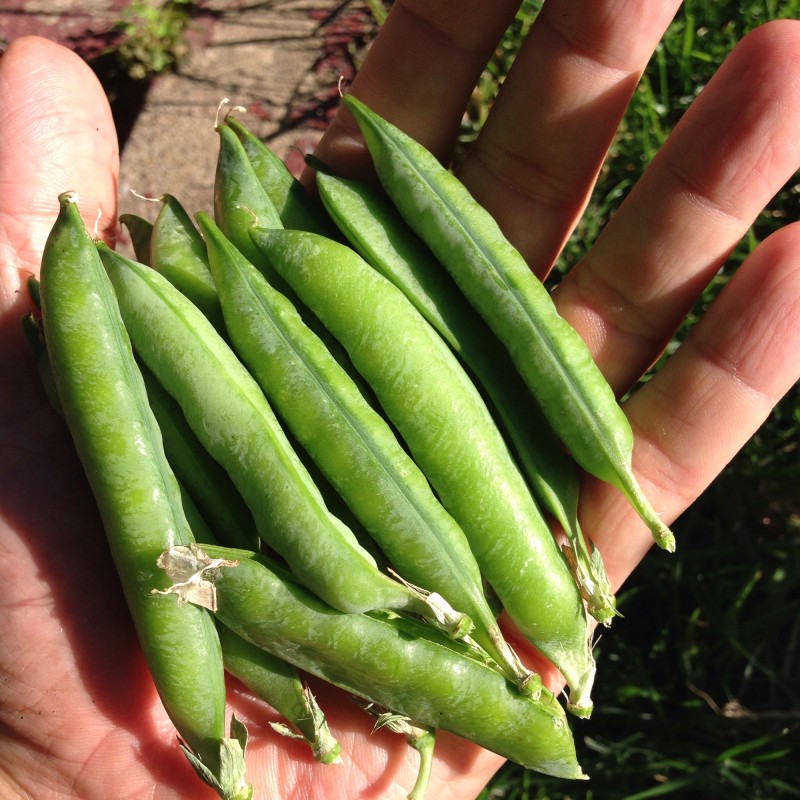When I started my front-yard garden experiment this spring, I was inspired by my year of homesteading with my sister and brother-in-law in southern Maine. And as the growing season has progressed, it has become harder and harder for me to avoid comparing the cultivation of my 150 square feet to their 8,000.
I jokingly refer to my morning weeding-and-watering ritual as “walking the fields,” as they do, even though it takes just a few steps to traverse my garden’s width. With my plants limited to six 4-by-4-foot boxes, I can stay on top of virtually every little weed that pops up (at least so far). And where I had spent weeks on end picking squash bugs and bean beetles off plants by hand in Maine, so far in Washington my pest control has been limited to using my water hose a few times to wash mites off Swiss chard leaves.
But just as my sister and brother-in-law are making decisions based on the most efficient use of their land for growing and eating as much of what they want and need as possible, I’m trying to do the same. And just like gardeners everywhere, I’ve made plenty of miscalculations, growing vegetables that probably have no business in a garden of this scale. Space is at a premium, and I shouldn’t give it away so easily.
Take peas. I was particularly excited about growing them, partly because I knew they’d come up quickly and give me some satisfaction as the first season in my new townhouse got started. And that they did; the dwarf variety called Green Arrow popped up within weeks of planting and curled its way toward little trellises I’d stuck into the soil. But after that first growth spurt, only one section of them seemed to take off, getting eight or nine inches tall, while the others reached barely half that, or less. I harvested a fistful of pods on a couple of occasions, devouring the sweet peas inside before I could even cook them, and then waited for the next round of white flowers signifying more yield. And waited. I realized a few weeks ago that they were done.
Right at about the same time, my brother-in-law, Peter, sent me an email with the subject line “Rebekah and the Peas.” I couldn’t open it quickly enough, and gasped when I saw the image of my sister, grinning and holding her hand above her head. She was standing in front of a 30-foot row of peas that had reached a full eight feet tall, with white flowers covering them. “I don’t know how we’re going to harvest all of these,” she told me when I called. I tried to muster some sympathy.
I’ve avoided several other vegetables because they take too long to grow or would take up too much space in exchange for the yield. Broccoli, cauliflower and potatoes fell into this category, but I succumbed to the idea of broccoli raab, thinking its frequent production of shoots and leaves might make it worth the effort. Turns out I was wrong, or maybe I just planted it too early or didn’t keep on top of it, because after a month or so of seemingly stunted growth, as soon as the weather warmed, it shot up — and immediately bolted, sending all its energy into flowers. They were pretty, and I’m sure they’d draw some pollinators, but when it came to my main goal — edibility — this was an even worse choice than those peas. The same thing happened with some baby bok choy I had scored from a farmer.
I did dodge one space-hogger: squash plants offered by a neighbor, who said they popped up from her compost pile. First I planted the two seedlings in corner spots, thinking they could sprawl a little into the path if need be, but then one day they seemed to double in size from morning to night. I retraced my conversation with her: What variety were these again? Oh, yes, and oh, no: butternut! I remembered Peter and Rebekah’s huge winter squash patch and realized that each one of these plants could easily take over an entire bed. I pulled them up and gave them to another neighbor, who put them where they’d have room in her back yard (but possibly not enough sun).
Plenty of my other plants have gone gangbusters, even after initial struggles. I started to get the feeling that I had planted the tomatoes far too early when a cold spell seemed to shrink them. I waited until it warmed, pulled four of them out and put in new, seemingly stronger seedlings. I left two of the originals in, figuring I’d compare their progress to that of the new ones. And what do you know? They’ve caught up so quickly, you’d never detect the difference. The cut-and-come-again lettuce, meanwhile, keeps delivering, over and over; and kale, chard and collards are happy enough that I’ve gotten a few meals out of them, with more to come.
But the beets — those I direct-seeded and those I planted as seedlings — and carrots seem to be doing a much better job growing their greens than their roots. Why? It could be because the soil in those particular beds wasn’t aerated enough or fertile enough, or perhaps I didn’t water the plants enough at the outset. I’m taking notes, reading up, asking advice and hoping I keep good enough track of what works and what doesn’t in time for a better result next month, this fall, next year.
Gardening is an exercise in patience, anyone will tell you. But it’s also about experimentation, about going with the flow, learning from your mistakes and not being afraid to cut your losses and move on to the next thing. The weekend after I got that photo from Peter, I ripped up my own little tangle of pea vines, turned them into mulch and popped in some French green bean seeds in their place. Out with the broccoli raab and bok choy, in with eggplant and shiso. Soon I’ll check the maturity dates of those carrots and beets, and if they look like they’re still underdeveloped, I’ll harvest them for greens and make room — much-needed room — for the next experiment.
Send questions/comments to the editors.




Comments are no longer available on this story